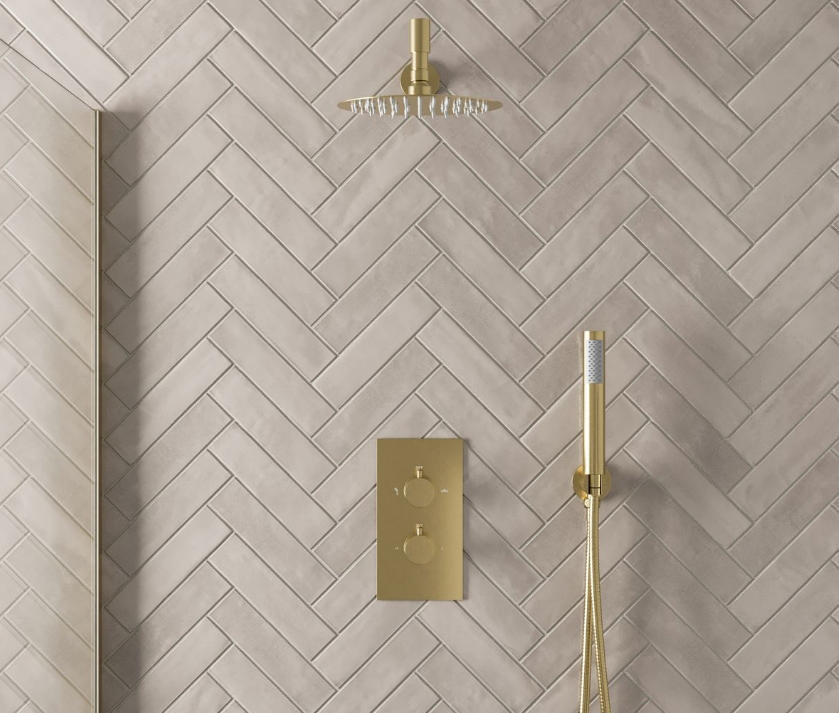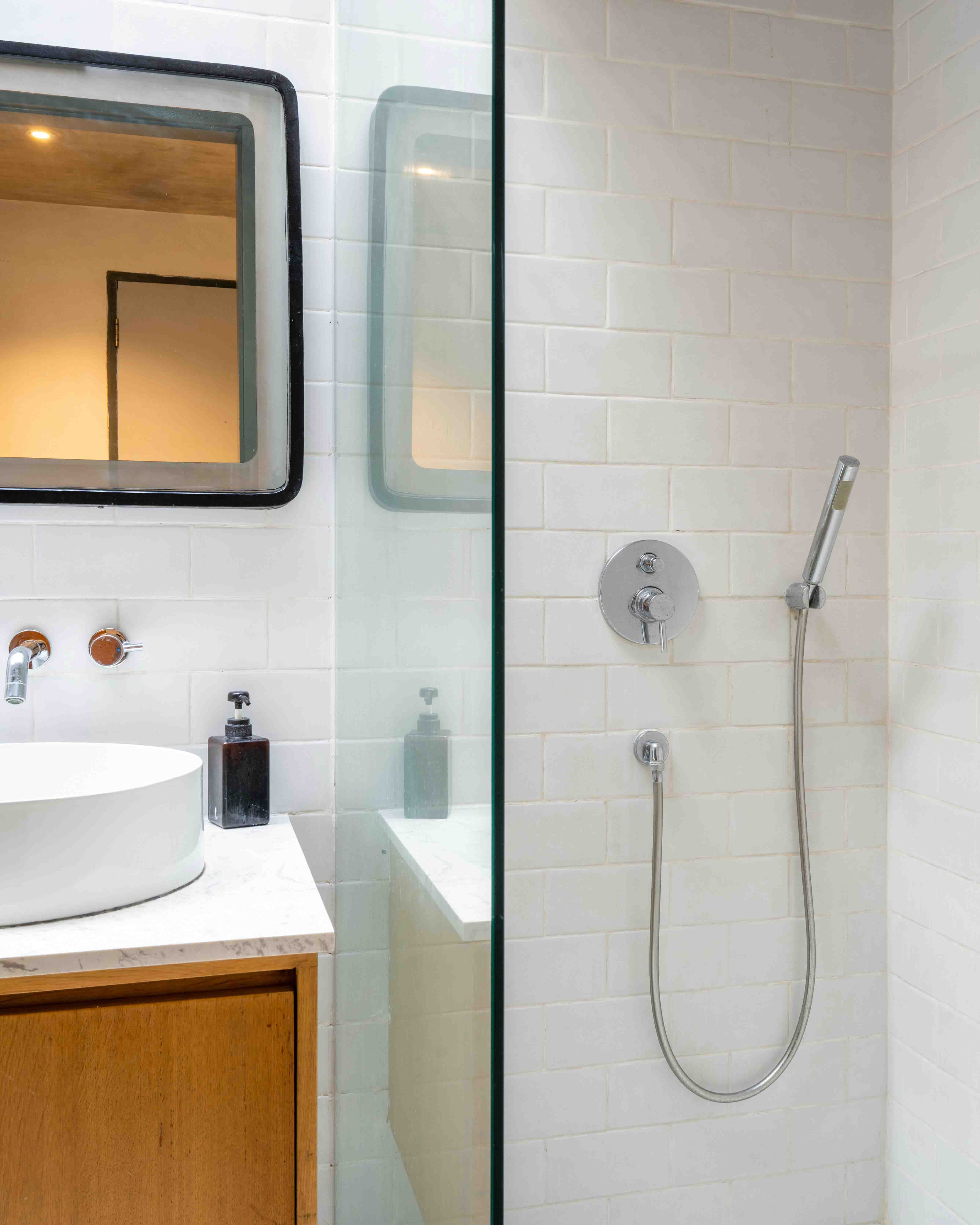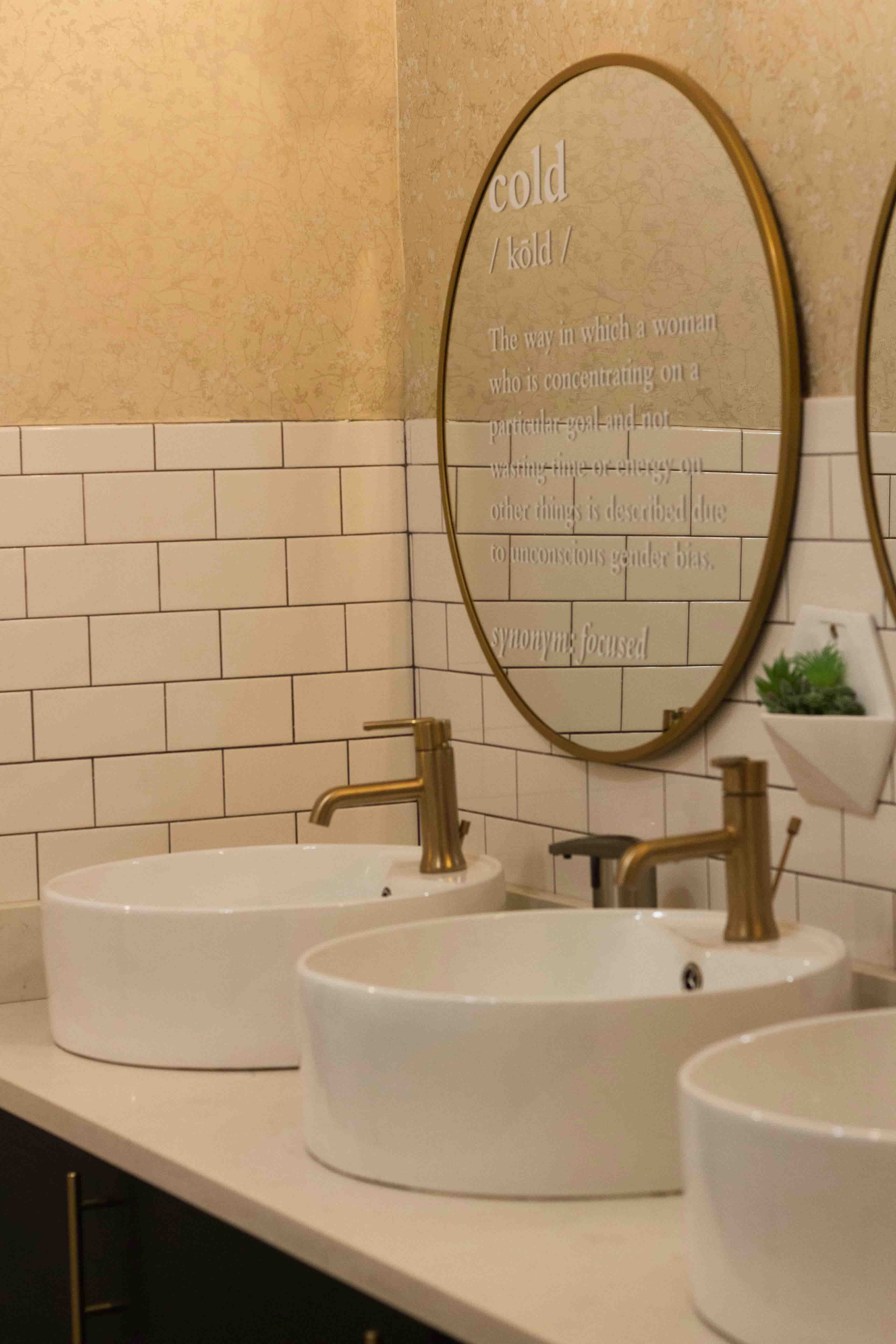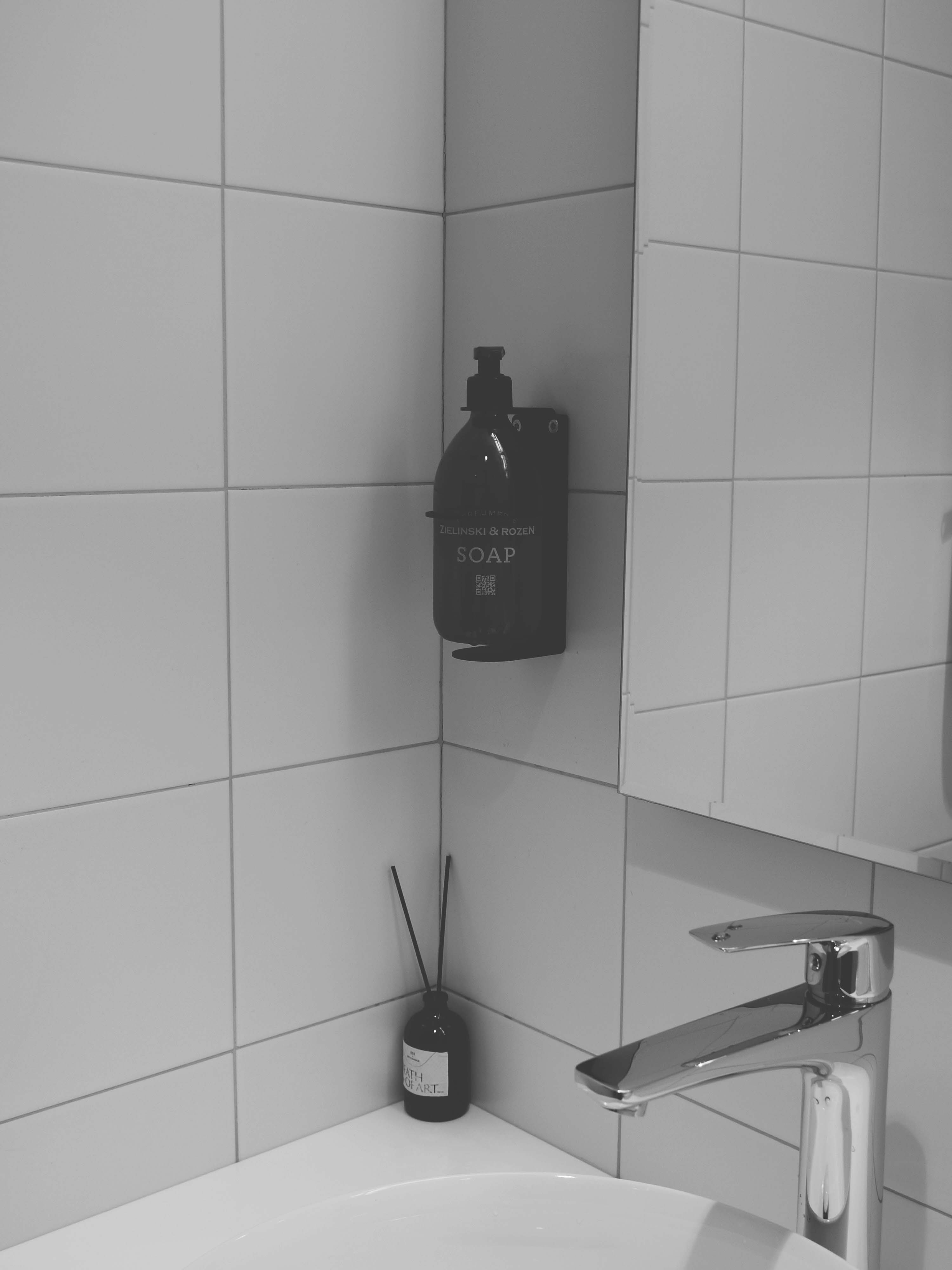When it comes to bathroom fittings, the material you choose is just as important as the design itself. The right material determines not only how the fittings look, but also how long they last, how much maintenance they require, and whether they can withstand constant exposure to water and humidity. For large-scale projects—whether residential developments, hotels, or commercial facilities—these factors can make a big difference in both performance and cost.
Among the wide range of materials available, brass and stainless steel stand out as the two most popular choices. Both are valued for their strength, durability, and aesthetic versatility, yet they serve different needs depending on the project type and budget.
This guide is designed to help wholesalers, developers, builders, and designers understand the advantages of brass and stainless steel bathroom fittings, compare their differences, and decide which material is the most suitable for their upcoming projects.
When sourcing bathroom fittings, the material forms the foundation of both performance and appearance. Two materials dominate the global market — brass and stainless steel — each offering distinct advantages for different project types.
Brass:
Brass is an alloy of copper and zinc, widely appreciated for its strength, corrosion resistance, and premium appeal. Its natural durability makes it highly resistant to leaks, cracking, or rusting, even under constant water exposure. Beyond performance, brass fittings carry a classic, high-end look, often finished in polished chrome, brushed nickel, or gold tones.
Stainless Steel:
Stainless steel, an iron alloy enriched with chromium, is celebrated for its hygiene, durability, and modern aesthetics. It resists rust, is easy to clean, and provides a sleek, minimalist appearance, making it a popular choice for both residential apartments and large-scale commercial installations. Stainless steel is also lightweight compared to brass, which helps lower material and transport costs.
Typical Applications:
Both materials are commonly used in bathroom fittings such as faucets, showerheads, towel rails, drains, valves, and grab bars. While brass often dominates in luxury and upscale projects, stainless steel is frequently chosen for high-traffic or cost-sensitive environments.

Durability is one of the most critical factors when selecting bathroom fittings. Bathrooms are exposed daily to moisture, cleaning chemicals, and constant use, so the chosen material must be able to withstand these conditions over time. Both brass and stainless steel deliver strong performance, but they do so in slightly different ways.
Brass:
Brass is naturally resistant to rust and corrosion because of its copper content, making it an excellent material for water-related applications. It holds up exceptionally well under long-term water exposure, which is why it has traditionally been the preferred choice for high-end faucets, shower mixers, and valves. Its density and weight contribute to its strength, ensuring fittings remain sturdy and less prone to cracking or deforming under pressure. Brass fittings often last decades with proper care, making them an ideal option for luxury hotels, spas, and premium residential projects where longevity is a top priority.
Stainless Steel:
Stainless steel, especially high grades such as SS304 and SS316, offers excellent resistance to corrosion in humid environments. These grades are designed to resist staining, pitting, and rusting, even with constant exposure to water and cleaning agents. Stainless steel fittings are slightly lighter than brass but still provide reliable strength, making them well-suited for high-traffic commercial bathrooms, hospitals, and public facilities, where durability and hygiene must go hand in hand. Although stainless steel may not match brass in sheer longevity, it balances durability with affordability, providing strong cost-performance value.
Comparison:
Brass is generally considered the more robust and long-lasting option, particularly in environments where fittings are expected to remain in service for decades without replacement. Stainless steel, however, offers a more balanced solution, combining durability with cost-effectiveness, which makes it highly attractive for large-scale developments where fittings must be both durable and budget-friendly.
In short:
Choose brass when long-term wear, premium appeal, and maximum resilience are essential, and stainless steel when you need dependable durability at scale with a more cost-effective profile.
Bathrooms are naturally high-moisture environments, with constant exposure to steam, condensation, and running water. Over time, these conditions can cause rust, pitting, or staining if the wrong material is used. That’s why corrosion resistance is one of the most important criteria when choosing between brass and stainless steel bathroom fittings.
Brass:
Brass has a natural resistance to corrosion, thanks to its copper composition, which makes it far less vulnerable to rust than many other metals. This quality is especially valuable in humid regions or hard-water environments, where fittings are exposed to minerals and moisture that accelerate corrosion. Brass maintains its integrity over decades, even in demanding conditions, which is why it’s often considered the “gold standard” for faucets, shower mixers, and valves in luxury projects.
Stainless Steel:
Stainless steel also offers excellent rust resistance, but performance varies significantly depending on the grade:
SS201: More affordable but prone to staining and corrosion over time, especially in high-moisture or coastal environments.
SS304: The most widely used grade, offering strong resistance to rust and staining, suitable for most residential and commercial bathrooms.
SS316: Considered the premium choice, with higher nickel content and molybdenum, which enhances its ability to resist pitting and corrosion in salty, coastal, or chemically exposed environments.
Best Choice by Project Type:
Hotels & Coastal Developments → Choose brass or SS316 for maximum resilience in environments where moisture and salt exposure are constant.
Commercial Restrooms (offices, malls, gyms) → SS304 is the practical choice, providing strong corrosion resistance while staying cost-effective for large-scale installations.
Luxury Residential → Brass is preferred for its premium look and long-term resistance to hard water corrosion.
In conclusion: brass offers natural, long-term protection against corrosion, while stainless steel (SS304/SS316) provides a modern, cost-efficient alternative — provided the right grade is selected for the project environment.

Beyond durability and performance, the visual impact of bathroom fittings plays a central role in shaping the atmosphere of a space. For B2B projects—whether luxury hotels, boutique residences, or large-scale commercial developments—the chosen material must align with the overall design intent.
Brass:
Brass fittings are renowned for their classic, premium appearance. The warm, golden undertones of brass bring an element of luxury and timelessness that stainless steel cannot replicate. Brass is also versatile in finishing:
Polished Brass → A bright, reflective look suited for traditional or opulent interiors.
Brushed Brass → A softer, more subtle texture that fits contemporary elegance.
Gold or Antique Finishes → Perfect for heritage, vintage, or high-end boutique projects.
This design flexibility makes brass the material of choice for luxury hotels, boutique residences, and spa-like bathrooms where exclusivity and sophistication are paramount.
Stainless Steel:
Stainless steel fittings embody a sleek, modern aesthetic that resonates with today’s minimalist and industrial design trends. With neutral tones and clean lines, stainless steel integrates seamlessly into contemporary projects. Finishing options include:
Polished Steel → Shiny and reflective, adding brightness to modern spaces.
Brushed Steel → Matte texture for understated, refined interiors.
Matte Black or Coated Options → Popular in trend-driven, modern apartments and commercial spaces.
Stainless steel is widely used in residential apartments, offices, and commercial bathrooms, where modern design and cost efficiency go hand in hand.
Applications by Project Type:
Brass → Luxury hotels, boutique residences, high-end developments seeking a premium, statement-making aesthetic.
Stainless Steel → Modern apartments, office towers, public facilities, and large-scale commercial projects where sleek design and practicality are prioritized.
In summary: Brass excels in luxury and heritage-inspired designs, while stainless steel shines in modern, functional environments. Both materials offer design versatility, but your choice should reflect the style, branding, and audience of the project.
Cost is always a key factor for wholesalers, developers, and builders when selecting bathroom fittings—especially for large-scale projects where budgets must be carefully managed. While both brass and stainless steel offer excellent value, they sit at different points on the cost spectrum, with long-term implications for project budgets.
Brass:
Brass fittings are generally more expensive due to the higher cost of raw materials and their heavier weight, which also increases transportation expenses. However, brass offers exceptional long-term value, as its durability reduces the need for frequent replacements or repairs. For luxury projects—such as high-end hotels, premium residences, or boutique developments—the higher upfront investment in brass fittings pays off by ensuring longevity, premium appeal, and minimal maintenance costs over time.
Stainless Steel:
Stainless steel fittings are more affordable and lightweight, making them a practical choice for bulk installations in residential apartments, office complexes, and commercial facilities. They deliver reliable performance at a lower cost, which helps developers meet budget constraints while still ensuring quality. For projects where scale is more important than luxury aesthetics, stainless steel provides an excellent balance of cost and function.
Total Cost of Ownership:
While brass requires a higher initial investment, its extended lifespan and premium durability mean it often proves more economical in the long run for luxury or high-use spaces. Stainless steel, on the other hand, provides a budget-friendly option that balances performance with cost savings, making it the go-to choice for large-scale developments where affordability and consistent performance matter most.
In summary:
Choose brass when long-term value and luxury positioning are critical.
Choose stainless steel when scalability and budget efficiency are top priorities.

In today’s construction and design landscape, sustainability and ease of maintenance are just as important as durability and cost. Global buyers, especially developers and designers working on large-scale projects, increasingly look for materials that align with green building standards while keeping upkeep simple for end users.
Brass:
Brass is a highly recyclable material, which makes it a sustainable option for bathroom fittings. Its long lifespan also means fewer replacements, reducing overall material waste. However, to maintain its premium shine and prevent tarnishing, brass fittings often require regular polishing or protective coatings. While this is manageable in luxury residential projects or boutique hotels where attention to detail is high, it may pose challenges in large-scale commercial settings with high foot traffic and minimal maintenance resources.
Stainless Steel:
Stainless steel is 100% recyclable and is widely recognized as an eco-friendly material for construction and fittings. Its biggest advantage is low maintenance: stainless steel fittings are naturally resistant to rust, stains, and fingerprints, especially when treated with brushed or matte finishes. This reduces the need for frequent cleaning and maintenance, making stainless steel ideal for commercial restrooms, office buildings, and healthcare facilities, where efficiency and hygiene are top priorities.
Eco-friendly Note:
Both brass and stainless steel support green building practices and sustainable design principles. Brass contributes through its longevity and recyclability, while stainless steel offers recyclability with the added benefit of low-maintenance performance. For B2B buyers aiming to meet LEED certifications or eco-conscious project goals, either material is a strong choice depending on the project’s priorities.
In summary:
Brass → Long lifespan + recyclable, but requires more maintenance.
Stainless steel→Fully recyclable + low maintenance, best for large-scale or high-traffic environments.
Choosing between brass and stainless steel often comes down to the type of project, budget priorities, and expected usage conditions. While both materials are excellent for bathroom fittings, each has distinct advantages that make it better suited for specific environments.
Brass Applications:
Brass is the go-to choice for premium projects where aesthetics and longevity are non-negotiable.
Luxury Residential Projects: Villas, penthouses, and boutique residences where buyers expect timeless design and premium finishes.
Hotels and Resorts: Especially 4- and 5-star properties where fittings must align with luxury interiors while withstanding constant guest use.
Spas and Wellness Centers: Where warm-toned finishes enhance a soothing, upscale atmosphere.
Upscale Developments: High-end apartments and mixed-use projects targeting luxury buyers.
Coastal Installations: Brass (or SS316 stainless steel) performs exceptionally well against salt-laden air, resisting corrosion in seaside environments.
Stainless Steel Applications:
Stainless steel is ideal for functional, high-traffic, and cost-sensitive projects where performance and hygiene are key.
Commercial Restrooms: Shopping malls, airports, and gyms where fittings must withstand heavy daily usage.
Mid-range Residential Apartments: Large-scale housing developments where durability and budget balance are critical.
Healthcare Facilities: Hospitals and clinics benefit from stainless steel’s hygienic, low-maintenance properties.
Office Buildings: Corporate restrooms require fittings that look sleek yet are easy to clean and maintain.
Guidance for Buyers:
Match the material to the project’s positioning, budget, and expected wear:
Choose brass for projects where luxury, prestige, and long-term value outweigh upfront costs.
Choose stainless steel when cost-efficiency, durability, and hygiene are the top priorities, especially for large-scale or high-traffic installations.
In short: Brass elevates luxury, stainless steel delivers practicality. Both materials can coexist within a single portfolio, depending on the segment of the market you serve.

At Sunvin, we understand that every project has unique demands—whether it’s a luxury hotel development, a mid-range apartment complex, or a commercial facility. With over 17 years of expertise in the bathroom fittings industry, we specialise in both brass and stainless steel solutions, ensuring our clients can choose the right material to match their project’s goals.
Expertise in Premium Bathroom Fittings
Sunvin offers a wide portfolio of bathroom fittings manufactured in brass and stainless steel, giving buyers the flexibility to balance luxury aesthetics, cost efficiency, and durability. From faucets and shower systems to towel rails and grab bars, our fittings are engineered to perform in diverse environments.
Customization (OEM/ODM Services)
Every project is different. That’s why we provide OEM and ODM customization, enabling wholesalers, developers, and designers to specify materials, finishes, and functional features tailored to their market. Whether you need brushed brass fittings for a boutique residence or stainless steel solutions for a commercial tower, Sunvin delivers fittings that align with your design and functional requirements.
Factory Strengths
Automated Production: Our Foshan-based factory integrates digitalized, intelligent systems to maintain efficiency, precision, and scale.
Strict Quality Control (QC): Dedicated teams ensure fittings meet international standards, inspecting materials, finishes, and performance before shipment.
Sustainable Manufacturing: With advanced wastewater treatment and a dust-free, quiet production environment, Sunvin ensures eco-friendly, responsible production.
B2B-Focused Support
Sunvin’s professional sales, logistics, and documentation teams provide end-to-end support, ensuring smooth sourcing and timely delivery worldwide. We work closely with wholesalers, developers, engineers, and designers, guiding them through material selection to guarantee the right solution for every project type.
With Sunvin, you don’t have to choose blindly between brass and stainless steel. Our expertise, customization options, and manufacturing strength make us a trusted partner for bathroom fittings that balance quality, scale, and style.
Partner with Sunvin to source high-quality, durable, and stylish solutions direct from Foshan’s leading manufacturer. Contact us today to discuss your project requirements.